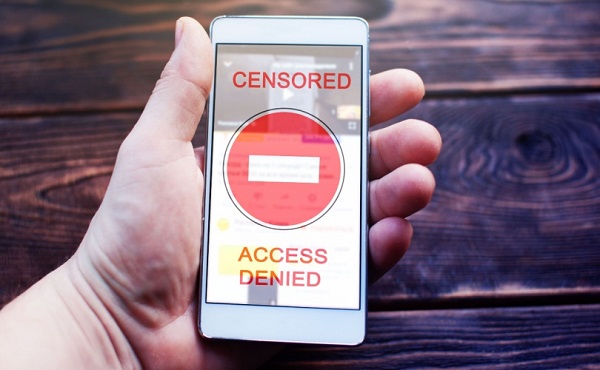Business
‘The DNA Of Our Foreign Policy’: How USAID Hid Behind Humanitarianism To Export Radical Left-Wing Priorities Abroad


From the Daily Caller News Foundation
By Thomas English
Behind the veil of humanitarian aid, the U.S. Agency for International Development (USAID) doled out billions in taxpayer dollars to engage in left-wing social engineering abroad — from rampant LGBT advocacy to diversity, equity and inclusion (DEI) programs and tech censorship.
President John F. Kennedy established USAID in 1961 to, in his words, “provide generously of our skills, and our capital and our food to assist the peoples of the less-developed nations to reach their goals in freedom.” The agency, though, has reinterpreted Kennedy’s mission statement to mean that Ecuador suffers from a lack of drag shows, that Peruvian comic books are too light on transgender representation, that the Serbian workplace is insufficiently welcoming to the homosexual community — while also offering social media platforms a host of creative tactics to suppress those who disagree with USAID’s social agenda.
“It’s probably one out of every three grants is totally insane left-wing nonsense … USAID has always been somewhat left, but when the Biden administration started, you can clearly see a huge uptick in spending,” Parker Thayer, who researches federal spending at Capital Research Center, told the Daily Caller News Foundation. “The amount of lunatic, fringe grants goes up dramatically. For example, if you go to USAspending[.gov] and search for the keyword ‘transgender,’ the graph is basically a vertical line when you hit 2021. It’s kind of remarkable.”
He also emphasized his discovery of a $13 million grant for an Arabic-language translation of “Sesame Street,” calling it “something else, man.”
Other programs include a $2 million grant for funding sex-change procedures in Guatemala, $500,000 for LGBT inclusion in Serbian workplaces, $70,000 for a DEI-themed musical in Ireland, a transgender clinic in Vietnam, a similar clinic in India, $46,000 in HIV care for transgender South Africans, $1.5 million more for South African children to “learn through play,” $20,000 Bulgarians to enjoy a vaguely-defined “LGBT-related event” — programs for which former USAID Administrator Samantha Power said “a big pot of money” wasn’t enough.
These and other programs were the vehicle through which Power went about “working LGBT rights into the DNA of our foreign policy,” a priority she emphasized to Harvard students in 2015 during her tenure as U.S. Ambassador to the United States.
“One of the most common complaints you will get if you go to embassies around the world — from State Department officials and ambassadors and the like — is that USAID is not only not cooperative; they undermine the work that we’re doing in that country,” Secretary of State Marco Rubio, who assumed control over USAID on Monday, said. He condemned the agency’s more questionable programs as not only a waste of taxpayer dollars, but a diplomatic liability.
“They are supporting programs that upset the host government for whom we’re trying to work with on a broader scale,” he said.
Beyond pro-LGBT funding, former President Joe Biden’s USAID offered social media platforms a “disinformation primer,” a 100-page document providing guidance for countering “disinformation” through increased fact-checking and censorship — policies it said would make platforms more “democratically accountable.”
The document credits some of its content suppression tactics to the Global Engagement Center (GEC), a now-defunct agency that operated under the State Department. To “counter disinformation,” GEC recommended ginning up “moral outrage” against content that “violates [the] sacred value” of what it considers “the truth.”
Biden seemed to heed GEC’s guidance on moral outrage during the height of the pandemic in 2021, accusing Facebook of “killing people” by insufficiently censoring anti-vaccine content on the platform. Facebook founder Mark Zuckerberg recalled during his Jan. 10 appearance on “The Joe Rogan Experience” an instance when the Biden administration pressured him to censor a satirical meme about vaccine side effects. Biden later walked back his accusation against Facebook in an interview with CNN.
The USAID-funded primer also recommended “advertiser outreach,” a strategy that would financially throttle agency-disfavored informational outlets by informing advertisers of potential damage to brand reputation.
“[Advertisers] inadvertently are funding and amplifying platforms that disinform. Thus, cutting this financial support found in the ad-tech space would obstruct disinformation actors from spreading messaging online,” the Disinformation Primer reads. “Efforts have been made to inform advertisers of their risks, such as the threat to brand safety by being placed next to objectionable content.”
The document further characterized the legacy media’s recent decline “leading to a loss of information integrity,” which thereby justifies USAID’s efforts to combat those “casting doubt on media.”
“It leads to a loss of information integrity. Online news platforms have disrupted the traditional media landscape. Government officials and journalists are not the sole information gatekeepers anymore … Because traditional information systems are failing, some opinion leaders are casting doubt on media, which, in turn, impacts USAID programming and funding choices,” the document continued.
USAID also faced intense congressional scrutiny in 2023 after allegations emerged that its PREDICT program and subsequent grants to EcoHealth Alliance potentially funneled U.S. taxpayer funds into gain-of-function coronavirus research at the Wuhan Institute of Virology — which raised questions about USAID’s possible role in contributing to the origins of the COVID-19 pandemic.
Republican Kentucky Sen. Rand Paul complained that USAID refused to hand over documents pertaining to the allegations and the agency’s funding habits.
“The response I got from your agency was: ‘USAID will not be providing any documents at this time.’ They’re just unwilling to give documents on scientific grant proposals — we’re paying for it, they’re asking for $745 million more in money. We get no response,” Rand said. “We’re not asking for classified information. We’re not asking for anything unusual. 20 million people died around the world … and you won’t give us the basic information about what grants you’re funding — should we be funding the Academy of Military Medical Research in China?”
Secretary of State Marco Rubio echoed Rand’s transparency concerns after announcing he was the USAID’s new acting director Monday, calling the agency “completely uncooperative.”
“They’re one of the most suspicious federal agencies that exists,” Thayer told the DCNF, suggesting the agency’s reputation for being opaque is justified. “It’s kind of a character trait for USAID to be less than transparent.”
Thayer explained that, in his research, USAID is selective in its transparency. The grants he called “complete nonsense,” such as the “Sesame Street” translation, “are very specific about what they’re doing. And the ones that are vaguely humanitarian-sounding are usually written like someone put a sociology textbook through a word randomizer then just took whatever it spat out and put it on the page. They are so full of jargon words that they’re basically incomprehensible, even to people who understand what the jargon words are supposed to mean.”
“I got $1.1 million for a study of youth rural migration in Morocco,” he added. “I literally — I cannot help you in understanding what that could possibly mean. I have no idea what that means.”
Elon Musk, the leader of the Department of Government Efficiency (DOGE), claimed that he and President Donald Trump agreed to shutter the agency entirely during an X Spaces conversation early Monday morning. Rubio emphasized in a Tuesday interview with Fox News that he does not intend to “get rid of foreign aid,” but is considering whether USAID ought to be housed under State Department or remain an autonomous agency.
“This is not about getting rid of foreign aid,” Rubio said. “There are things we do through USAID that we should continue to do, that make sense. And we’ll have to decide: Is that better through the State Department, or is that better through a reformed USAID? That’s the process we’re working through … but they’re completely uncooperative. We had no choice but to take dramatic steps to bring this thing under control.”
Business
103 Conflicts and Counting Unprecedented Ethics Web of Prime Minister Mark Carney
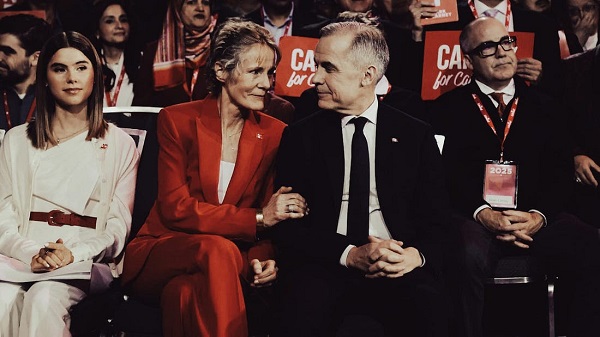

 Dan Knight
Dan Knight
Brookfield. The PMO. Eurasia Group. One Green Agenda, Billions in Conflicts.
Well, it finally happened. After months of dodging questions and hiding behind vague platitudes about “climate leadership,” Prime Minister Mark Carney’s official conflict-of-interest screen has been released by the Ethics Commissioner—and what it reveals is nothing short of staggering. Not five entities. Not a dozen. One hundred and three. That’s how many corporate and financial interests Carney has quietly acknowledged are too conflicted for him to touch.
At the center of this web? Brookfield Asset Management, the $1 trillion global investment firm where Carney was Vice-Chair before walking straight into Canada’s top political office. The very same Brookfield that owns energy projects, pipelines, nuclear companies, real estate empires, carbon offset schemes you name it, they’ve got a piece of it. And now, they’ve got a former executive running the country.
We’re told it’s all perfectly legal. We’re told Carney has “recused himself.” But what this disclosure actually shows is something much bigger: a government captured by finance, a prime minister with deep, ongoing entanglements in the very sectors his policies now enrich, and a climate agenda that’s beginning to look a whole lot like a money-printing operation for the global elite.
The deeper one digs into Prime Minister Mark Carney’s ethics disclosure, the clearer the picture becomes: what’s been framed as a climate leadership story is, in reality, a tightly wound web of commercial interest wrapped in green rhetoric. The 103-entity conflict-of-interest screen, ostensibly a shield against impropriety, instead serves as a road map of how thoroughly Canada’s top political office is entangled in the global green finance complex centered around Brookfield Asset Management.
As of Q1 2025, Brookfield reports $125 billion in assets under management (AUM) in its Renewable Power & Transition segment, a figure representing 12.5% of its overall $1 trillion portfolio. This segment alone encompasses most of the entities on Carney’s ethics screen: nearly 60 out of 103, even after accounting for duplicates. These aren’t passive holdings they’re the very projects, technologies, and subsidy-eligible vehicles Carney once oversaw directly as vice-chair of Brookfield and as co-lead of its $15 billion Global Transition Fund.
Brookfield’s renewables portfolio is vast: over 41.8 GW in installed capacity globally across wind, solar, hydro, and storage, with a 200+ GW development pipeline. A significant portion of this is owned or operated through the same SPVs and subsidiaries now appearing on the conflict list. Notable entries include Scout Clean Energy ($1B), Urban Grid ($650M), and Standard Solar ($540M). These acquisitions were all completed while Carney was at Brookfield, and they continue to generate revenue from U.S. and Canadian subsidy frameworks programs now shaped by the very government he leads.
Brookfield Renewable Partners L.P., the sector flagship, holds approximately $95 billion in total assets and generated $315 million in funds from operations in Q1 2025 alone. The firm is planning to add another 8 GW in capacity this year expansion that is, in part, subsidized through the same green transition policies Carney has promoted both in office and as a climate finance advocate.
The line between public and private interest blurs even further when examining the entities categorized under the “energy transition” banner; nuclear, CCS (carbon capture and storage), and so-called e-fuels. Carney’s screen includes Brookfield’s recent $8 billion acquisition of Westinghouse Electric Company, a nuclear power behemoth now positioned to benefit from Canada’s federal nuclear incentives and SMR (small modular reactor) program. Other flagged investments like Entropy and Carbon TerraVault fall directly into carbon credit and offset schemes—markets heavily influenced by federal regulation and incentive design.
Let’s stop pretending. What we’re witnessing here isn’t just conflict of interest, it’s a complete merger of state power and corporate ambition, all dressed up in the language of moral urgency. The Ethics Commissioner’s so-called “screen” for Mark Carney? It’s a joke. A checklist. A bureaucratic fig leaf meant to reassure you that everything’s above board. But it’s not.
Because here’s the truth: Carney is policing himself. He’s supposed to recuse himself from decisions that benefit the 103 entities he’s tied to many of which he helped create or oversee as Vice-Chair of Brookfield Asset Management. But who decides if he’s in conflict? He does. Or more accurately, the PMO does. The same PMO now drafting Dominion Barton-style focus groups to figure out how best to sell you the green grift. There’s no third-party oversight, no transparency on what’s actually in his so-called blind trust, and no disclosure of the carried interest he may still be entitled to from Brookfield’s billions in funds.
Meanwhile, the policy levers of government are being pulled in exactly the direction Brookfield bet on. Wind, solar, carbon capture, nuclear, every so-called “transition” sector that Brookfield spent years buying into is now flush with green subsidies, ESG guarantees, and taxpayer-backed investment shields. This isn’t the free market at work, it’s a strategic payoff, engineered by someone who’s now running one of the most powerful G7 economies.
And again, none of it is illegal. That’s the most damning part. Because legality isn’t the standard here. The standard is integrity, and that’s nowhere to be found. The scale of this overlap isn’t just large. It’s systemic. It’s built into the very foundation of the Carney government’s climate policy. The same man who structured these funds is now the man signing off on the policies that make them profitable.
Diana Fox Carney’s Quiet Role in the Climate Cash Machine
And just when you thought the web of influence stopped at the Prime Minister himself, along comes Diana Fox Carney, economist, climate consultant, and spouse of the most well-connected man in Canadian politics. While Mark Carney’s direct financial entanglements with Brookfield Asset Management are now public record, his wife’s career trajectory paints an equally troubling picture of how the same elite networks driving Canada’s green spending are profiting in parallel, behind the curtain.
Diana Fox Carney currently holds a senior advisory role at Eurasia Group, the New York-based geopolitical risk consultancy that’s become a quiet powerhouse in shaping global ESG narratives. It’s also the same firm where Gerald Butts—Trudeau’s longtime fixer and architect of the federal climate playbook—now serves as vice chair. Add in former journalist Evan Solomon and even Conservative stalwart John Baird, and you’ve got a bipartisan consultancy stacked with Canadian political operators. Convenient? Maybe. Coordinated? You decide.
And what has this firm staffed with Liberal-era insiders received in return? Millions in untendered government contracts, including a $446,210 deal from Natural Resources Canada in 2024 for vaguely defined “geopolitical research.” That’s nearly half a million dollars in taxpayer money handed out without competition, to a firm employing the sitting Prime Minister’s wife—and his former colleagues. Just coincidence, right?
But Eurasia Group is only the start. Diana’s reach extends far beyond advisory calls. She’s connected to:
- BeyondNetZero, a climate equity fund backed by U.S. private capital giant General Atlantic.
- Helios CLEAR, investing in African climate “resilience.”
- ClientEarth U.S. and the Shell Foundation, both pushing aggressive environmental litigation and policy influence.
- Canada 2020, a Trudeau-aligned think tank that’s pocketed over $1 million in federal grants.
Throw in indirect ties to Gates Foundation funding, Save the Children, and research networks influencing African agriculture, and you’re looking at a network of transnational climate consultants with deep, ongoing influence over the exact climate policies the federal government is now implementing under her husband’s leadership.
Now, legally, Diana is in the clear. She’s not a public office holder. But that’s the point. The rules weren’t designed for this new class of political operator—the dual-career globalist power couple, where one side signs the climate cheques while the other cashes them. No formal disclosure is required. No recusals. No transparency. Yet the influence is there. The access is there. The money is flowing.
Opposition Reaction: Pierre Poilievre Slams Carney’s Hidden Conflicts, Demands Real Transparency
Conservative Leader Pierre Poilievre wasted no time responding to the bombshell ethics screen showing Prime Minister Mark Carney is recusing himself from dealings with over 100 companies, many tied to his former employer, Brookfield Asset Management. In a pair of direct and widely shared posts, Poilievre accused Carney of concealing critical financial entanglements from voters during the 2025 election, and warned that the Liberal leader is now either positioned to profit from federal decisions or paralyzed from making them.
“Mark Carney must explain why he kept these conflicts secret from voters until after the election,” Poilievre wrote. “Now he will be in a position to profit from big decisions or will be forced to sit out those decisions altogether. Either way, Canadians will pay the price.”
In a second post earlier that morning, Poilievre challenged the credibility of Carney’s so-called blind trust, urging the Prime Minister to liquidate his holdings entirely and hand the cash to a trustee who can invest it without Carney’s knowledge or influence:
“Otherwise, he will always know how political decisions can affect his personal wealth.”
These statements mark the strongest opposition rebuke yet of the Carney government’s financial entanglements. Poilievre’s message echoes growing public criticism that the ethics screen is little more than window dressing, lacking third-party oversight, and that it fails to address indirect benefit through carried interest, deferred compensation, or spousal affiliations.
While Carney has claimed he is in full compliance with federal ethics laws, the fact that the disclosures were released only after the election is fueling outrage—not just among Conservatives but from broader accountability watchdogs. With over 100 entities flagged, many of them tied to green energy, infrastructure, and climate finance—the same sectors receiving billions in federal spending—the Conservative leader has positioned himself as the voice of those demanding a full forensic audit of the Prime Minister’s interests.
The message from the opposition is clear: if this were a Conservative leader, the media would be calling it a scandal. But because it’s Carney—the global banker, the climate envoy, the Liberal savior—the establishment is looking the other way. Poilievre’s Conservatives aren’t. And they’re turning this into a defining issue of integrity and accountability in Canadian politics.
Let’s Call This What It Is
This isn’t subtle. This isn’t nuanced. This is what a grift looks like—on paper, in public, in black and white. Over one hundred conflicts of interest tied directly to Mark Carney. Entire portfolios of foreign and domestic holdings, billions in green investments, shell companies in Bermuda—and that’s before we even get to his wife’s global consultancy work, advising firms that quietly gobble up federal contracts without a single public tender.
And here’s the thing: we weren’t told any of this during the election. There was no press conference, no headline, no public vetting of the sprawling web of corporate and climate interests now tied to the highest office in the country. Why? Because it would have compromised the Liberal grip on power. Because the last thing this party wanted Canadians to know was that their new leader wasn’t just a banker—but a banker with a boardroom’s worth of financial strings still attached.
Now imagine—just for a moment—if it had been Pierre Poilievre. Or Andrew Scheer. Or any Conservative leader with over a hundred screened entities, global finance ties, offshore SPVs, and a spouse employed by a company collecting millions in government money. The press would be in a frenzy. The CBC would be running specials. They’d be calling him compromised, unfit, a foreign agent.
But because it’s their guy—because it’s the Liberal elite’s banker-in-chief—we’re told it’s fine. It’s all above board. Move along, nothing to see here.
Nonsense. Absolute nonsense.
This is not leadership. This is ideological grifting at the highest level. The Liberal Party, once the party of national unity and democratic accountability, has become a hollowed-out machine for elite interests. They’re not liberals. They’re grifters—grifting for green subsidies, globalist contracts, and personal access to power. They have no principle left. Just consultants, contracts, and a taxpayer-funded narrative to keep the game going.
Enough. Canadians didn’t vote for this. They weren’t told the truth. And now the entire climate agenda, the whole “just transition,” looks more like a get-rich scheme for the political class than any serious public mission.
It’s time for an election. Time to clear house. Time to drain this toxic, green-glossed swamp once and for all.
Subscribe to The Opposition with Dan Knight
Invite your friends and earn rewards
Business
Most Canadians say retaliatory tariffs on American goods contribute to raising the price of essential goods at home

- 77 per cent say Canada’s tariffs on U.S. products increase the price of consumer goods
- 72 per cent say that their current tax bill hurts their standard of living
A new MEI-Ipsos poll published this morning reveals a clear disconnect between Ottawa’s high-tax, high-spending approach and Canadians’ level of satisfaction.
“Canadians are not on board with Ottawa’s fiscal path,” says Samantha Dagres, communications manager at the MEI. “From housing to trade policy, Canadians feel they’re being squeezed by a government that is increasingly an impediment to their standard of living.”
More than half of Canadians (54 per cent) say Ottawa is spending too much, while only six per cent think it is spending too little.
A majority (54 per cent) also do not believe federal dollars are being effectively allocated to address Canada’s most important issues, and a similar proportion (55 per cent) are dissatisfied with the transparency and accountability in the government’s spending practices.
As for their own tax bills, Canadians are equally skeptical. Two-thirds (67 per cent) say they pay too much income tax, and about half say they do not receive good value in return.
Provincial governments fared even worse. A majority of Canadians say they receive poor value for the taxes they pay provincially. In Quebec, nearly two-thirds (64 per cent) of respondents say they are not getting their money’s worth from the provincial government.
Not coincidentally, Quebecers face the highest marginal tax rates in North America.
On the question of Canada’s response to the U.S. trade dispute, nearly eight in 10 Canadians (77 per cent) agree that Ottawa’s retaliatory tariffs on American products are driving up the cost of everyday goods.
“Canadians understand that tariffs are just another form of taxation, and that they are the ones footing the bill for any political posturing,” adds Ms. Dagres. “Ottawa should favour unilateral tariff reduction and increased trade with other nations, as opposed to retaliatory tariffs that heap more costs onto Canadian consumers and businesses.”
On the issue of housing, 74 per cent of respondents believe that taxes on new construction contribute directly to unaffordability.
All of this dissatisfaction culminates in 72 per cent of Canadians saying their overall tax burden is reducing their standard of living.
“Taxpayers are not just ATMs for government – and if they are going to pay such exorbitant taxes, you’d think the least they could expect is good service in return,” says Ms. Dagres. “Canadians are increasingly distrustful of a government that believes every problem can be solved with higher taxes.”
A sample of 1,020 Canadians 18 years of age and older was polled between June 17 and 23, 2025. The results are accurate to within ± 3.8 percentage points, 19 times out of 20.
The results of the MEI-Ipsos poll are available here.
* * *
The MEI is an independent public policy think tank with offices in Montreal, Ottawa, and Calgary. Through its publications, media appearances, and advisory services to policymakers, the MEI stimulates public policy debate and reforms based on sound economics and entrepreneurship.
-

 Business18 hours ago
Business18 hours agoMost Canadians say retaliatory tariffs on American goods contribute to raising the price of essential goods at home
-

 National1 day ago
National1 day agoWomen and girls beauty pageant urges dismissal of transgender human rights complaint
-

 Alberta18 hours ago
Alberta18 hours agoCross-Canada NGL corridor will stretch from B.C. to Ontario
-
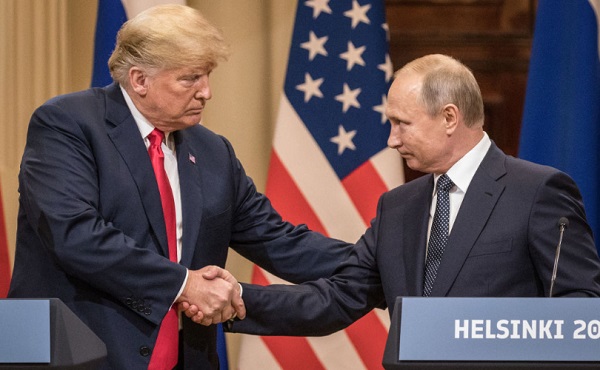
 International2 days ago
International2 days agoSupport for the Ukraine war continues because no one elected is actually in charge.
-
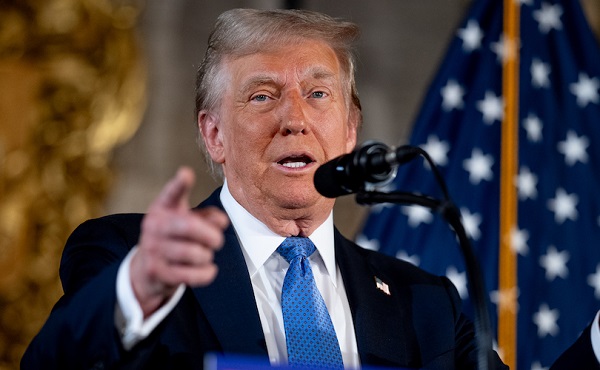
 Business2 days ago
Business2 days agoTrump slaps Brazil with tariffs over social media censorship
-
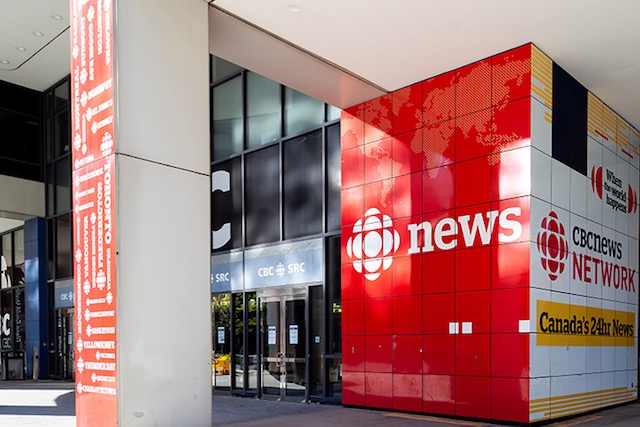
 Business2 days ago
Business2 days agoCBC six-figure salaries soar
-

 Business19 hours ago
Business19 hours agoB.C. premier wants a private pipeline—here’s how you make that happen
-

 Addictions2 days ago
Addictions2 days agoCan addiction be predicted—and prevented?




